Historical Highlights
The origins
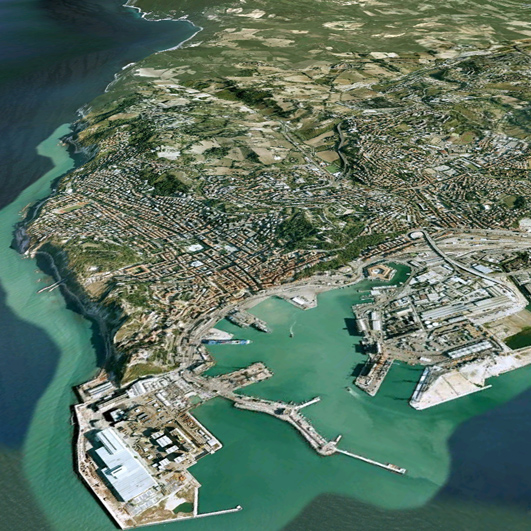
View of Ancona
The presence of a university in Ancona is a rather recent historical development and the result of cultural, social, economic, and historical forces. In the Middle Ages, Ancona already boasted a School of Law and in 1562 the town received authorization from Pope Pius V to found a "Studium Generale cuiuscumque Facultatis et Scientiae," offering instruction in Civil and Canon Law and Theology. The privilege of adding additional faculties was also bestowed by the pontiff, and the members of the faculty were invested with the power to grant the various academic degrees. Moreover, faculty and students alike enjoyed the privileges, prerogatives and immunities granted to a "Studium Generale", like the ones in Bologna or Padua.
The new "Studium" flourished in a fervour of study for a century, followed by a progressive decline starting in the second half of the XVII century when students from the wealthier families in the town chose to attend the more famous "Studia" in Rome and Bologna. This decline culminated in the first closing of the "Studium" in 1739.
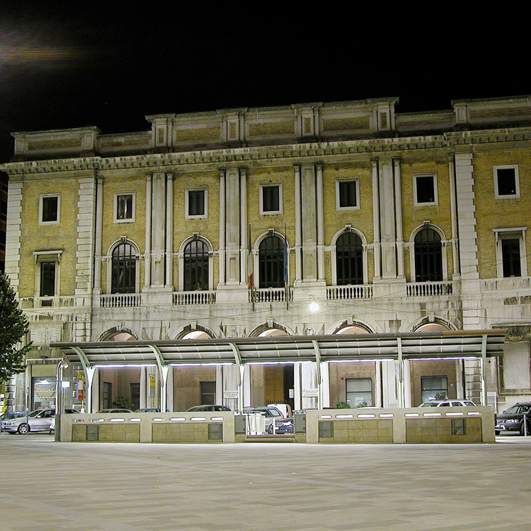
Rectorate
In 1746, the town council passed a resolution, which was then approved by Pope Benedict XIV, to re-open the chair of Civil and Canon Law. However, the political upheaval from 1797-1799 led to the closing of the "Studium" for the second time. Ancona's aspirations to open the university seemed to lie dormant for over a century until the end of World War I. At first, this desire to re-found the university was uncertain and confused, but soon took shape due to a growing awareness of the need for higher education at a regional level. A variety of proposals were ventured throughout the 1920s, but none of them went beyond the planning stage. One such proposal was the creation of a Regional University Confederation with the Rectorate in Ancona, which was also to host both a three year programme in Clinical Medicine and a vaguely defined school of commerce.
In the 1930s, the outline of a plan for a regional university system was drawn up. This plan was to include a university in Ancona and met with enlightened and resolute supporters in the president and members of the Marche Institute of Science, Literature and Art which was founded in the capital of the region in 1925.
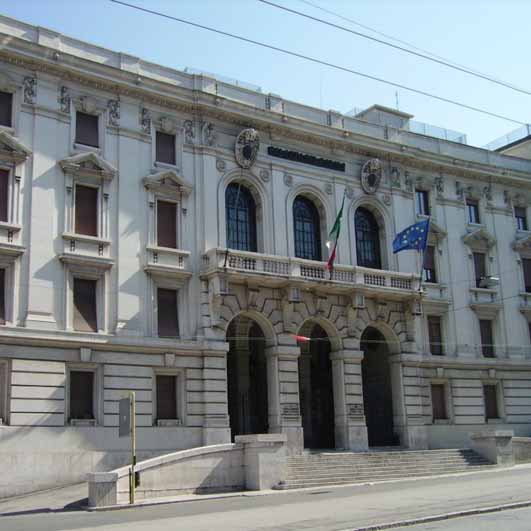
Town Hall
The patient groundwork to lay the foundations for a university, which was interrupted during World War II, was resumed in the post war period and between proposals, requests, oppositions, campanile stances, silences and ministerial denials, came in 1969 to the establishment of the Free University of Ancona, its statute, with the activation of the first biennium of the Faculty of Engineering and the biological triennium of the Faculty of Medicine and Surgery. By the Board of Directors of the Consortium constituted between Municipalities, Provincial Administration, Chamber of Commerce, and chaired and stimulated by Professor Trifogli.
The Higher Board of Education subsequently expressed favorable opinion, authorizing the activation of the Faculty of Engineering for the Academic Year 1969-70 and of the School of Medicine for the following year. Thus was born in Ancona the Free University, definitively recognized as State University in very short time, and exactly on 18 January 1971.

Villarey Campus
The town of Ancona finally boasted its own university, and the these first two Faculties were later merged with the Faculty of Economics and Commerce. During the academic year 1988-89 the Faculty of Agriculture was founded (degree in Agricultural Sciences), as well as the Faculty of Mathematics, Physics and Natural Sciences with a degree course in general biology and specialisations in marine biology, oceanography and biotechnology.
By 2009, the university had five Faculties, 21 different undergraduate degree studies (3 years - first level), 19 graduate degree courses (second level), 3 single cycle university degrees with limited entry (1 in engineering - 5years, 1 in medicine & surgery - 6years and 1 in orthodontics and prosthetics - 6years), 11 vocational study courses, 29 fields of specialization, and 10 PhD programmes with their administrative offices in Ancona. The initial student enrollment of 290 for the academic year 1969-70 has progressively increased to 17,000 in 2009-2010.The teaching faculty currently numbers 550 professors, teaching assistants, and researchers, along with 181 temporary staff and 605 technical and administrative personnel.
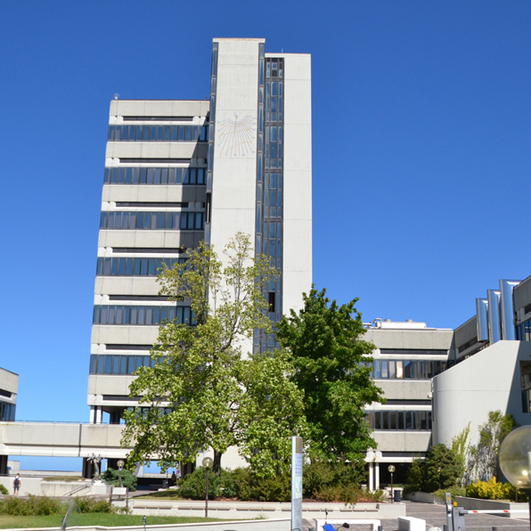
Monte Dago Campus
Teaching and research activities were once housed in separate locations, which were often unsuitable and inadequate. They are presently grouped together on three main campuses. The science and technology campus is located in Monte Dago, and its buildings boast the monumental and prestigious work designed by Belluschi, an Italian-American architect. This complex houses the Faculty of Engineering, the Faculty of Agriculture, and the Faculty of Mathematics, Physics and Natural Sciences. Construction is currently being completed on this site to meet the teaching and laboratory needs of the new Faculty of Biology.
A second research and educational complex is located in Torrette for the biological, scientific and clinical needs of the Faculty of Medicine and Surgery. The third campus is located in centre of the town in a historic ex-barracks called Caserma Villarey and houses the Faculty of Economics. Villa Maria, located near Passetto, is an additional centre of study for orthodontics and dental prostheses. The administrative offices and the Rectorate of the University are ideally located in the centre of the town in Piazza Roma in what was once the Palazzo della Provincia (Government Building), while the other administrative units are located in buildings in close proximity to this one.
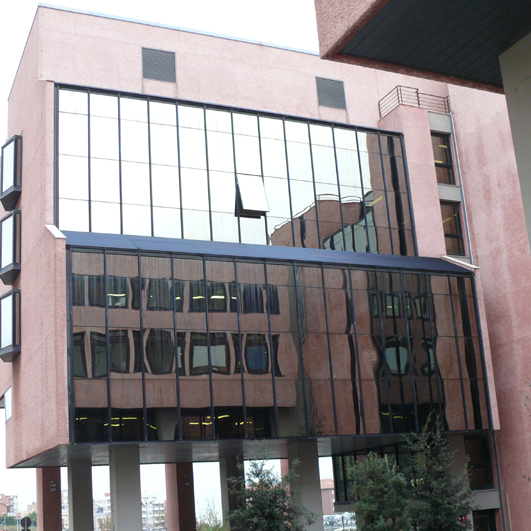
Torrette Campus
The University facilities also include a sports complex situated on an extensive tract of land in Posatora, the former location of the Faculty of Medicine and Surgery before it was destroyed by a disastrous landslide in 1982. In the same area, a new botanical garden has been planned which, together with the university research farms (currently operational) in the town of Agugliano, integrate the scientific and educational facilities of the Faculty of Agriculture.
In addition, medium- to long-term planning includes the renovation of the former Stamira barracks, the latest acquisition made by the University. This building has been proposed as a guest residence for students and scholars from other Italian and foreign universities who more and more frequently attend courses and conduct research at the various institutes and departments, within the context of national and international projects. On 18/01/2003 the University of Ancona changed its name to "Università Politecnica delle Marche".
